Cold stratification is an important step for cold-tolerant plant seeds to break their dormancy in order to germinate. This process helps ensure germination success and consistency.
Plants are smarter than we give them credit for!
An incredibly smart way that plants, especially plants native to cold climates, have evolved to ensure their longevity is defense mechanisms built into their seeds.
One of these defense mechanisms is high levels of abscisic acid within the seeds. This cold-sensitive plant hormone promotes dormancy and inhibits germination when the conditions are too cold and may harm the seedling.
Another clever insurance policy built into the seeds is a thick seed coat. This hard seed coat is softened by frost and weathering and generally takes place over the winter months.
In order to break dormancy and get the seeds ready for spring germination, they need to be exposed to cold temperatures. This cold treatment, over an extended period, actually breaks down the growth inhibitor within the seed or the hard seed coat outside of the seed, allowing them to germinate once the conditions are suitable.
This process is known as cold stratification.
This guide to cold stratifying seeds is dedicated to spring planting!

As an Amazon Associate I earn from qualifying purchases.
Jump to:
Tips + Tricks
No. 1 --> Find a great seed provider! I've been using West Coast Seeds for a few years now, and I love the service, selection, as an added bonus, they're Canadian. Don't let that fool you, though, they ship all over North America!
No. 2 --> Don't forget to label your seeds before they hit the fridge! Label each set of seeds with their name, including the variety or cultivar, especially if you have multiple varieties of a certain plant. Add the date they are added to the fridge and the cold stratification time needed. If you're ambitious, you could even add a date to remove and plant!
Let Mother Nature Do The Work
This is by far the easiest method! She knows what she's doing, and the seeds respond.
Sowing your seeds in the late fall, before snow and frost, means you have no work to do and you'll be greeted by beautiful little seedlings in the spring!
Choosing the fall sowing method is by far the easiest when it comes to actual cultural input, but there are many things that can go sideways when fall planting. Animals can find your seeds and enjoy them as a snack! Heavy fall rains can shift, bury, or wash the seeds away. The germination rate will be high, but a late freeze can really damage your seedlings!
While nature does a wonderful job stratifying over winter, there are times under cultivation that we want to break dormancy to stimulate quicker and more successful seed germination.
One benefit to forcing seed stratification is allowing growers in warm zones the ability to grow plants that otherwise won't stratify naturally. Or allowing cold climate growers (like me!) to grow plants that have a long maturity window and need to be started indoors long before the last frost date.
Another thing that many people don't consider when it comes to fall planting is the lack of control. When we take steps to propagate our own plants, we choose where they end up in the end via transplanting. When you sow seeds and let nature do the work, you really do have less control!
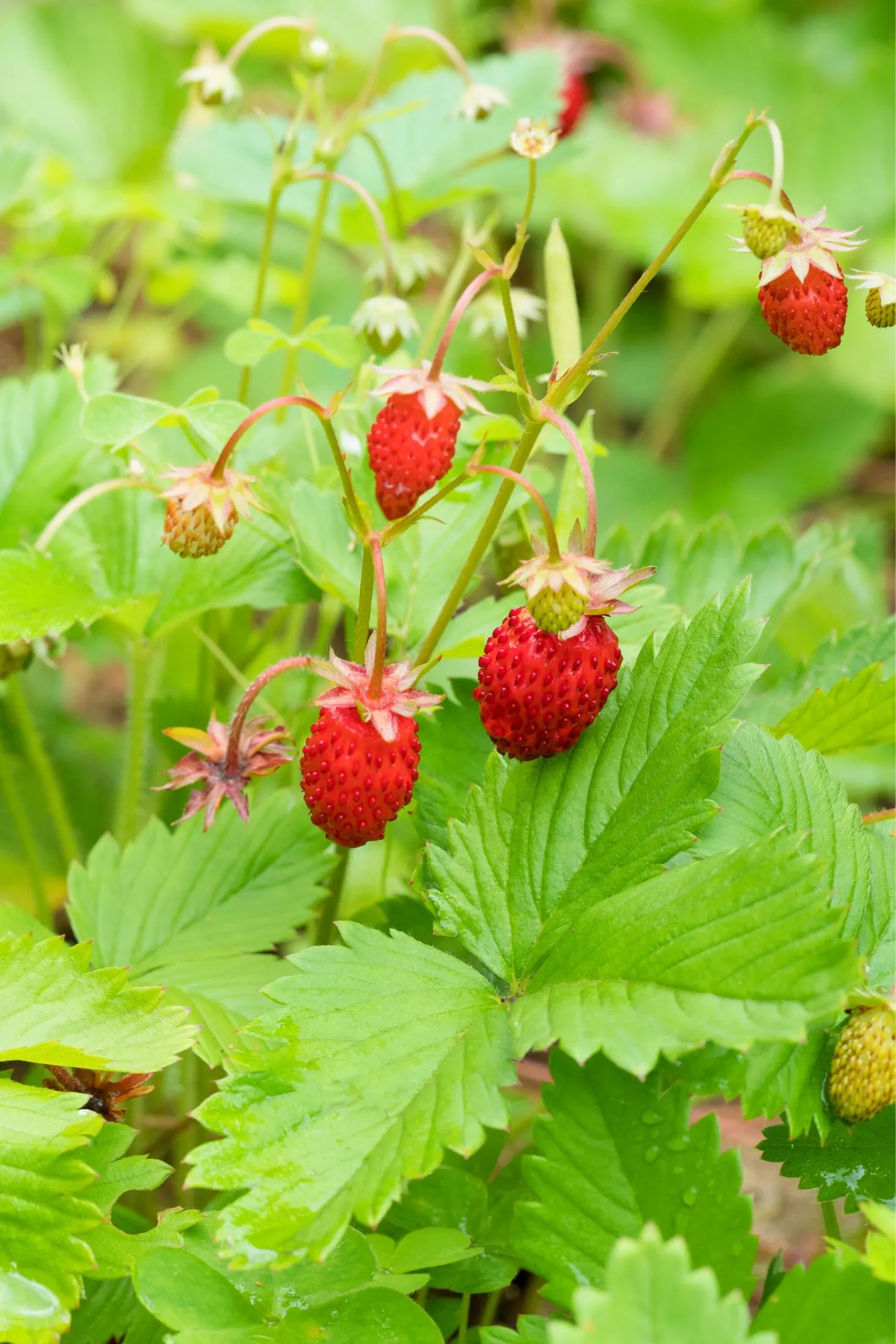
Cold Dry Stratification
During dry stratification, seeds are exposed to temperatures below freezing (32f/0c) for a period of 30-60 days, some even longer! This dry stratification mimics a winter's dormancy period.
This is definitely the easiest cultural method of stratification! To dry stratify seeds:
- Place seeds or seed packages in a ziplock bag or fridge-friendly container.
- Store the container in the fridge or freezer for 30-60 days, or as required by your seeds.
- When ready to sow, remove the seeds from the fridge or freezer and allow them to come to room temperature within the container before opening.
- Sow as desired.
*NOTE: this method may be less effective in germinating some seeds. My recommended method is moist cold stratification.
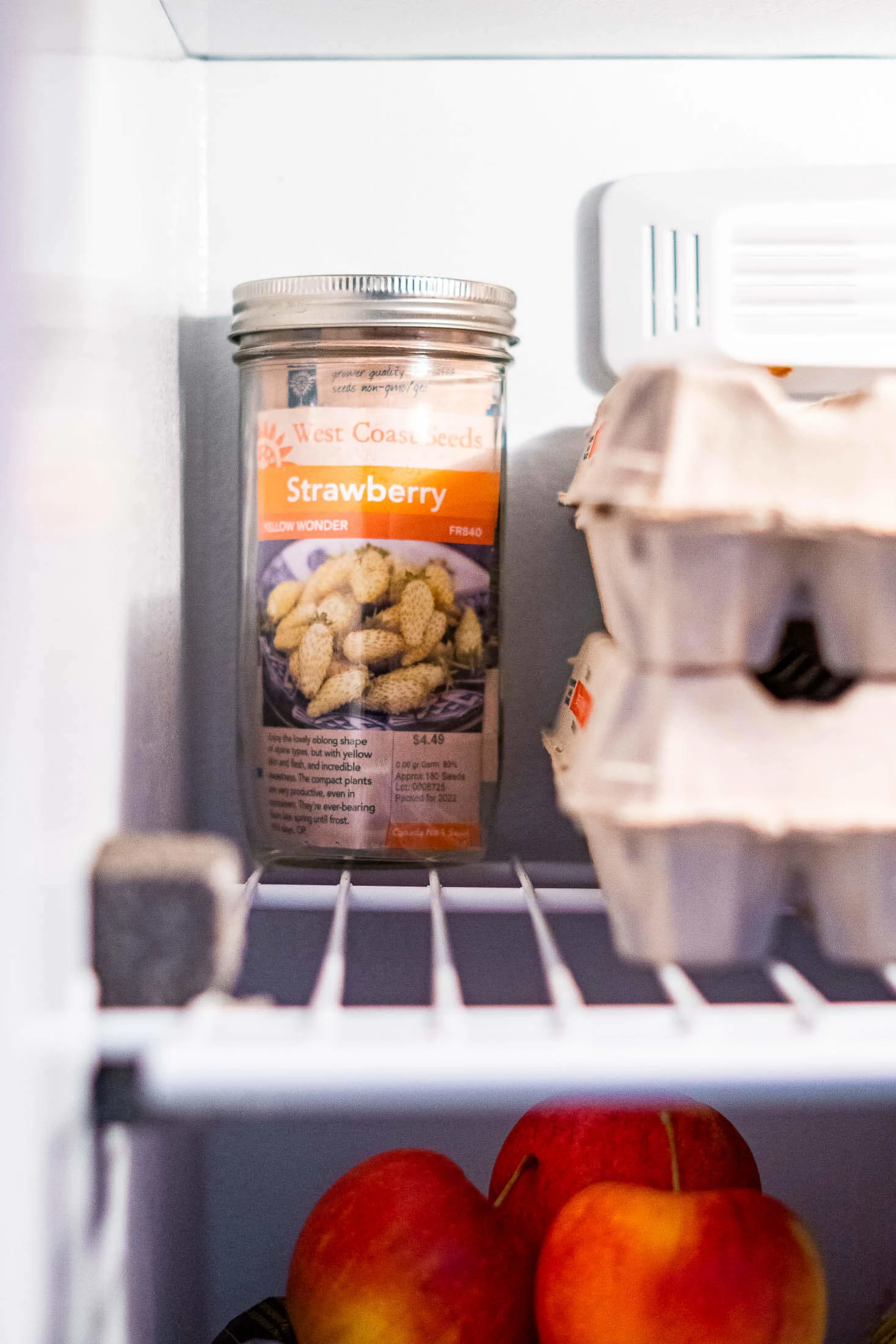
Cold Moist Stratification
This version of cold stratification mimics snowy or rainy winter conditions.
This method is a little bit more involved, but by no means difficult. To cold moist stratify seeds there are 2 easy ways:
Plant the seeds:
- Plant the seeds as required into a moistened, inert planting medium, like a peat moss seed starting mix. I like to use Pro-MIX. This can be done in plug trays, soil blocks, or peat pellets. Ensure you're placing them in a container that you can place in the fridge. Cover the container with a dome lid, plastic wrap, or a plastic bag.
- Do not seal the container air-tight, seeds are a living things and need air to germinate! Leave the vent on your container open, or leave the bag partly unsealed.
- Store the container in the fridge for 3-4 weeks, or as required by your seeds.
- When the stratification period is over, these seed trays should be removed from the fridge and allowed to germinate at room temperature. Once germinated, they are ready to be planted out as seedlings.
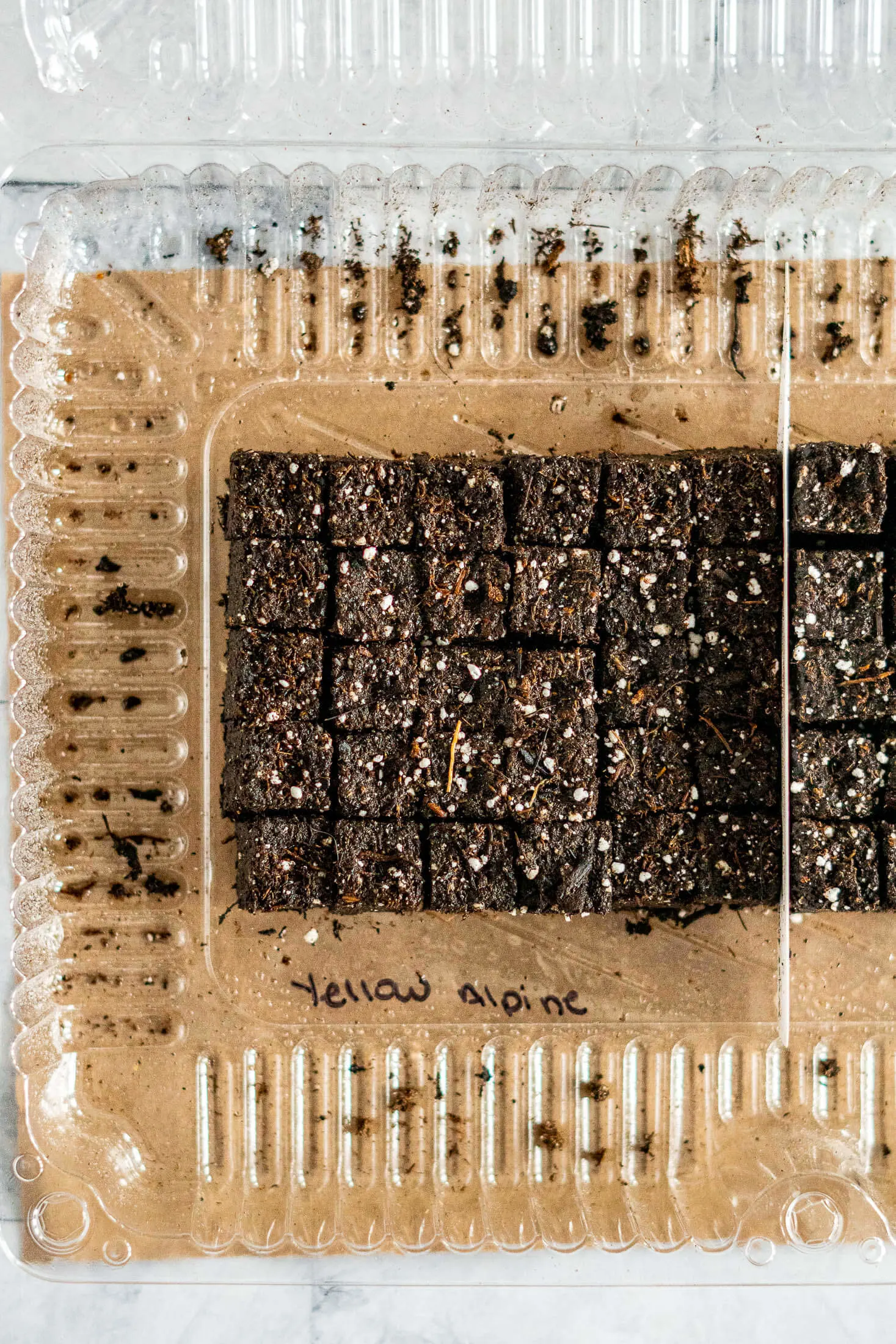

Paper towel:
- Sandwich the seeds between two pieces of moistened paper towel. The easiest way I've found to dampen the paper towel is by using a spray bottle filled with clean fresh water.
- Slide the paper towel into a plastic bag, without sealing it because seeds are a living things and need air to germinate!
- Pop the bag into the fridge for the required amount of time and then when ready, plant the seeds as usual.
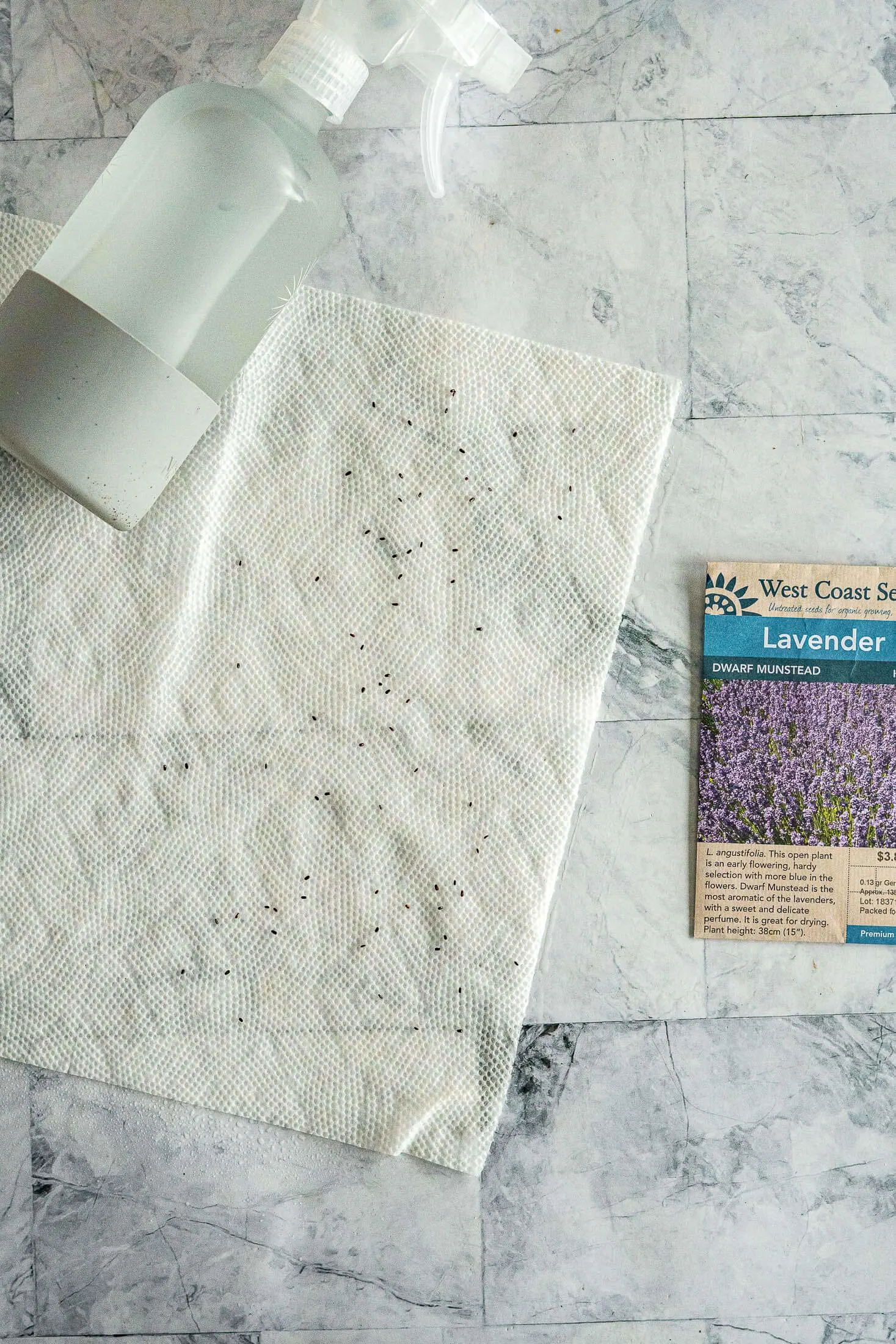
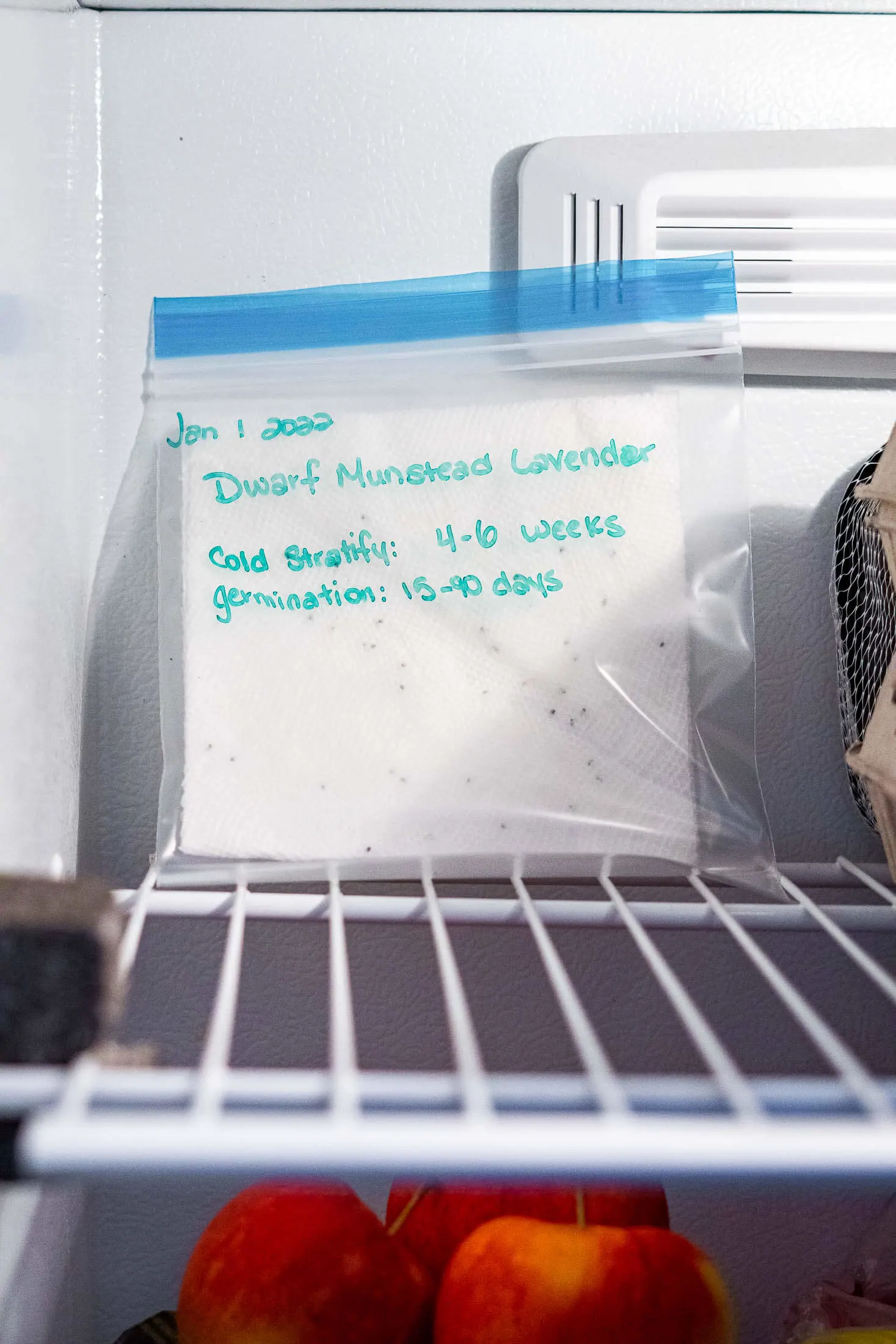
Wondering when to use the paper towel method, when to plant and when to use the peat method? The answer is size and convenience.
Small seeds like strawberries are easier to cold stratify by being sown and then placed in the fridge. These nearly microscopic seeds are hard enough to see without having to pluck them off a paper towel!
Larger seeds, especially those too large for 3/4" soil blocks, can be cold stratified using the paper towel method.
Personally, I choose not to use the paper towel method whenever possible, my preferred method for moist cold stratification is to plant tiny seeds into mirco soil blocks and place them in the fridge, this is just such a great, space-effective way to stratify seeds. This way, they are ready to go whenever I'm ready to pull them out! If you needed a reason to get a garage fridge, this might be it! haha.
Note: Some gardeners choose to soak their seeds for a period before planting or placing them in a paper towel. This can be beneficial if your seed has a thick seed coat, it will help your seeds germinate better and likely more quickly, but it's up to you if you want to soak seeds or not!
What Plant Species' Seeds Need Cold Stratification?
There are a few categories of plants that most likely need cold stratification to germinate. If you aren't sure which category your plant falls in, check your seed packet!
Cold hardy perennials: Plants from cold climates that can withstand freezing temperatures without all of their plant parts above the surface dying back generally require cold stratification. These include perennial deciduous (like saskatoon berry trees) and evergreens (like cedar trees).
Cold hardy herbaceous perennials: These plants survive the winter by allowing all above-ground plant parts to die back to the root over the winter months. During their yearly growth cycle, they emerge, grow, flower, and release seeds. These plants almost always require cold stratification. Lavender and common milkweed are in this group!
Fruits requiring chill hours: Some fruit-bearing trees need a certain number of chilling hours to break down growth-inhibiting hormones like abscisic acid within the dormant winter buds before they'll flower and set fruit. Seeds from these fruit varieties require a cold stratification! Think of apples, sour cherries, and even blueberries.
Seed packages: Your seed packet will tell you if your seeds need a cold stratification! It's best to ensure that you're reading the description when ordering and read all the packages once they arrive to ensure that you'll have time to stratify any seeds that require it.
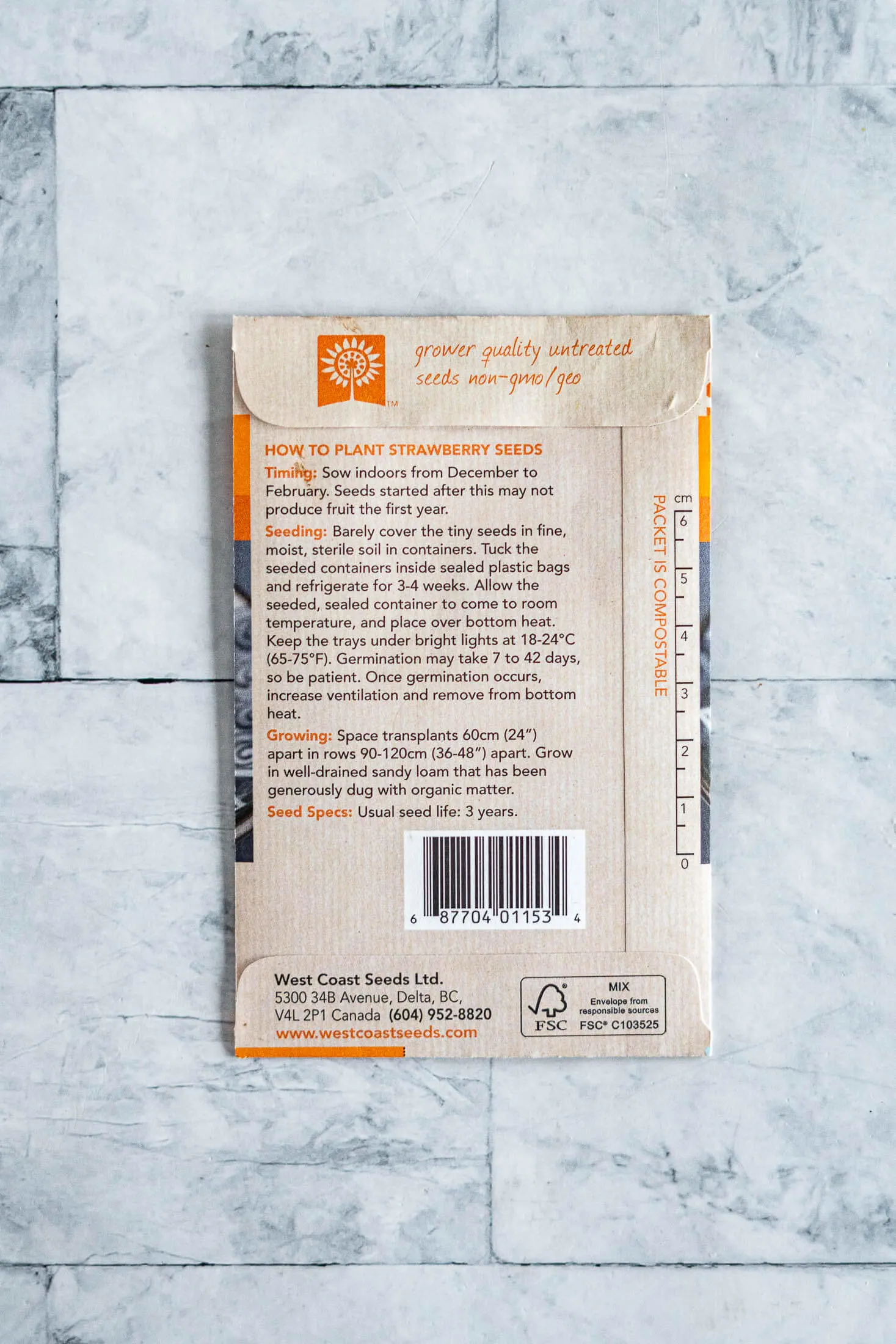
TL;DR
Here's the too long; didn't read version:
The seeds of some plants need to be subjected to chilling temperatures before they will germinate. This cold stratification period ensures faster, more consistent germination for these species.
It can be accomplished outdoors with Mother Nature's help, by storing the seeds in the fridge for 30+ days, or by moistening the seeds and keeping them in the fridge for 3-4 weeks.
Pin This Guide To Cold Stratifying Seeds!
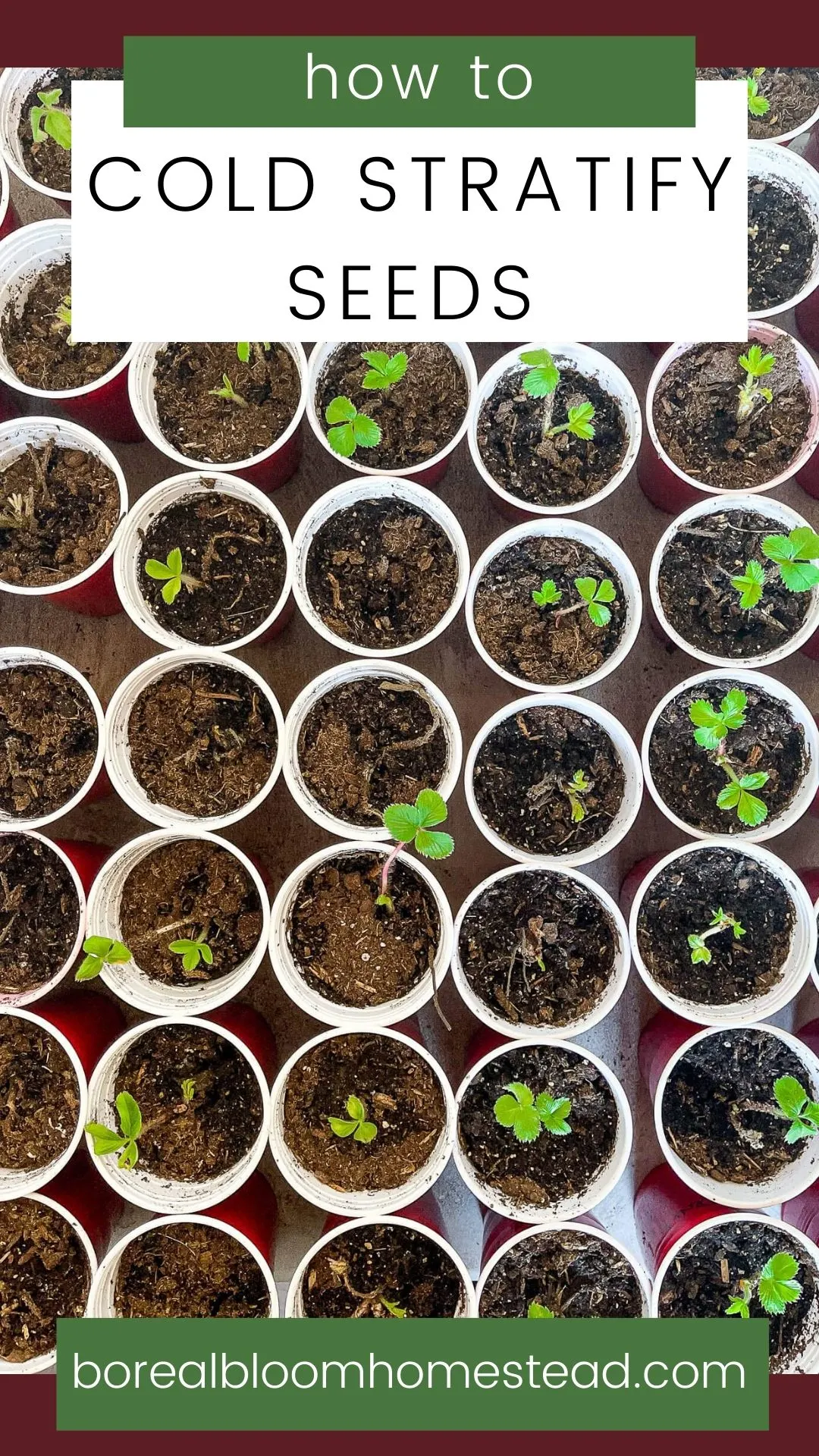

Kate
Monday 25th of July 2022
This worked so well for my strawberries this year! Thanks for the great info- I loved that you went into detail about which plants specifically benefit from cold stratification.
Ally
Saturday 30th of July 2022
Glad to hear this post was helpful! Tag me in a picture of your strawberries on Instagram!
Paula Lynn
Friday 24th of June 2022
Thank you for a very clear description of what cold stratification is and the different methods of doing it. Much appreciated.
Ally
Monday 27th of June 2022
Ah! I'm so glad you learned something from it - That's the metric of a good post, in my opinion!